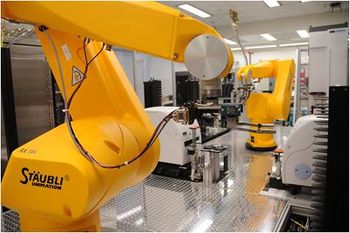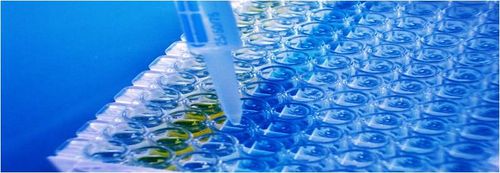High throughput tools for proteins, enzymes and biopolymers
Nowadays there is a growing demand for new enzymes, proteins and biopolymers which exhibit a wide range of applications in the pharmaceutical, chemical and food industries. The potential for marine biotechnology in this matter is due to the vast size of the untapped marine protein reservoir and their unique properties[1].
Many marine organisms are facing extreme environmental conditions such as differences in salinity and pH, extremely high and low temperatures for instance in hydrothermal vents and cold seeps, large differences in pressure at extreme depths etc. Because of this, many organisms have developed special metabolites during evolution allowing them to survive and reproduce. The enzymes present in these organisms reflect their general life conditions.


Fig 1, 2. Hydrothermal vents and cold seeps, examples of extreme environmental conditions in the sea.[2][3]
Many of the marine organisms are thus thermophilic, halophilic, barophilic or dispose other unique properties which have various interesting biotechnological applications. Cold-adapted enzymes for example can provide a lot of economic benefits and energy conservation by reducing the cost of enzyme preparation at mild temperatures as they reach a much higher activity at mild temperatures. Next to this, cold adapted proteins also minimize unwanted chemical reactions that can occur at high temperatures. All of these properties are of particular relevance f.e. in the food industry, when a change in nutritional value or flavor of the original products is desired or simply to avoid spoilage. Isolation of enzymes from organisms living in polluted and contaminated areas could display a useful tolerance for high concentrations of heavy metals as well. Marine ecosystems however have peculiar characteristics resulting from the unique combination of diverse physical factors which are very hard to mimic. Due to the difficulties in reproducing a marine microenvironment in laboratory conditions, most attempts to culture these organisms often fail and the marine biodiversity largely remains undiscovered.[4] Novel opportunities such as sensitive high throughput screening methods are urgently required to study marine diversity and its useful biotechnological applications.

Fig 3. High-throughput screening robots.[5]
The development of these technologies are based on robotic systems, which aim to directly screen samples or colonies through the use of newly designed high throughput chips based on existing enzymatic activity detection methods. Via numerous tests based on robotics, data processing, control software, liquid handling devices and sensitive detectors, researchers can quickly indentify all active compounds, how they modulate a particular molecular pathway, how they interact with each other and where they are located. The obtained products of these experiments are often used for drug design.[6] The Sensitive high throughput screening methods need to be based on easily distinguishable phenotypes such as colorimetric assays. Also there should be focused on cell-free designs in order to enhance substrate availability and reduce the inhibitory and cross reactivity of cellular components. Small molecule microarrays (SMMs) will contribute to an expansion of the capabilities of high-throughput screening as well. The screening of exopolysaccharides is even more difficult because the production of these products can only be induced through certain incentives such as stress and because recovering the end-products requires time consuming and labour intensive control of these cultures.[7]

Fig 2. A colorimetric assay.[8]
The current rapid advancement in these methods and tools proves the interest in these marine resources from a biotechnology point of view. New interdisciplinary projects have been funded which focus on the identification of novel marine microbial strains from extreme environments in order to discover new products in various sectors such as health, personal care and nutrition.
References
- ↑ http://www.food.gov.uk/science/additives/enumberlist
- ↑ http://www.dailygalaxy.com/my_weblog/2008/08/extreme-water-f.html
- ↑ http://www.photolib.noaa.gov/htmls/expl1780.htm
- ↑ http://journal.frontiersin.org/article/10.3389/fmars.2014.00038/full
- ↑ https://en.wikipedia.org/wiki/High-throughput_screening#/media/File:Chemical_Genomics_Robot.jpg
- ↑ https://ihcp.jrc.ec.europa.eu/glossary/hts
- ↑ Querellou, J. (2010) MarineBiotechnology: A new vision and strategy for Europe. Marine Board-ESF Position Paper 15.
- ↑ http://www.eurodiagnostico.com/en/catalog/product/view/id/13267/s/caspase-3-colorimetric-assay-kit/category/3/